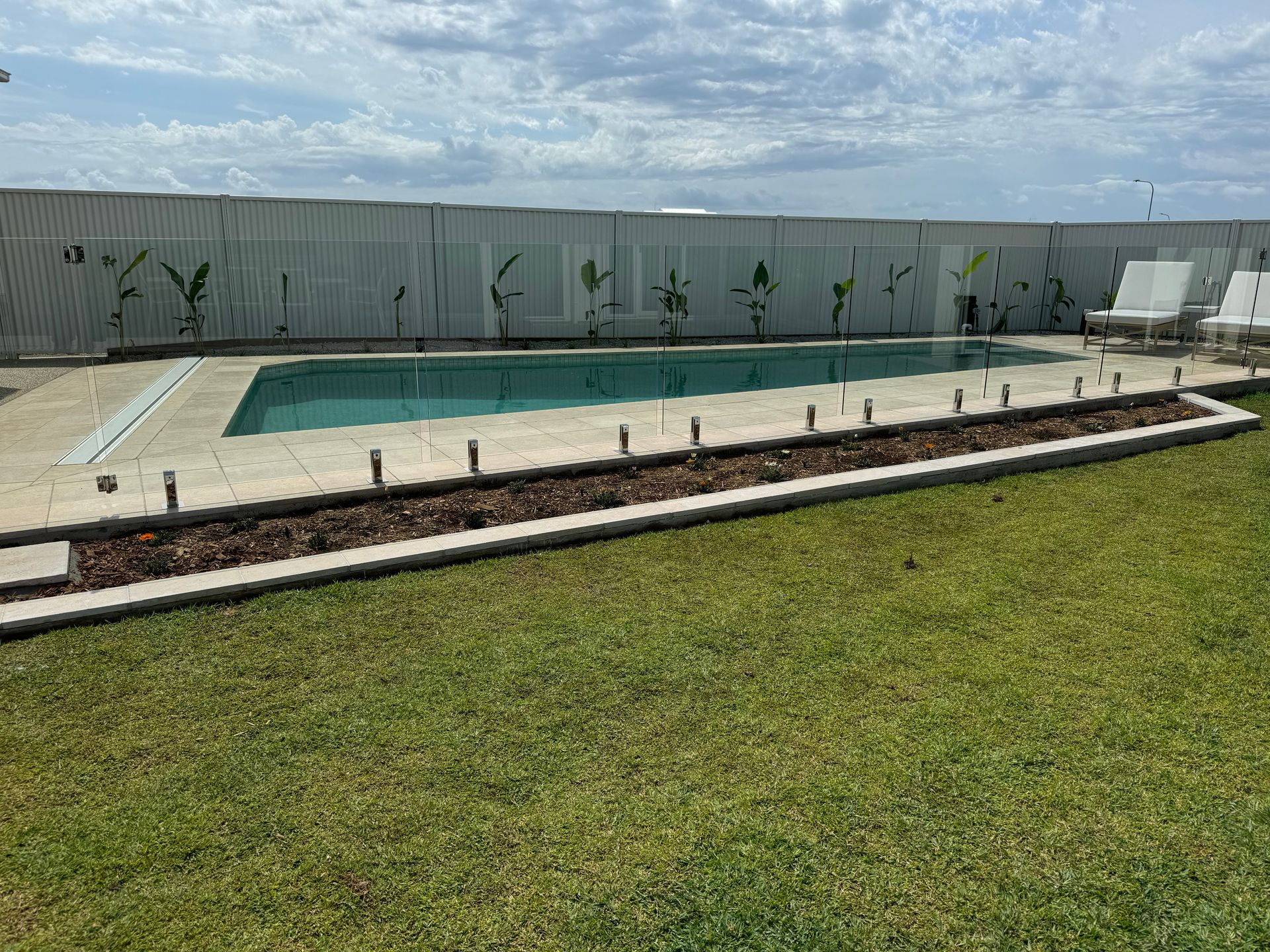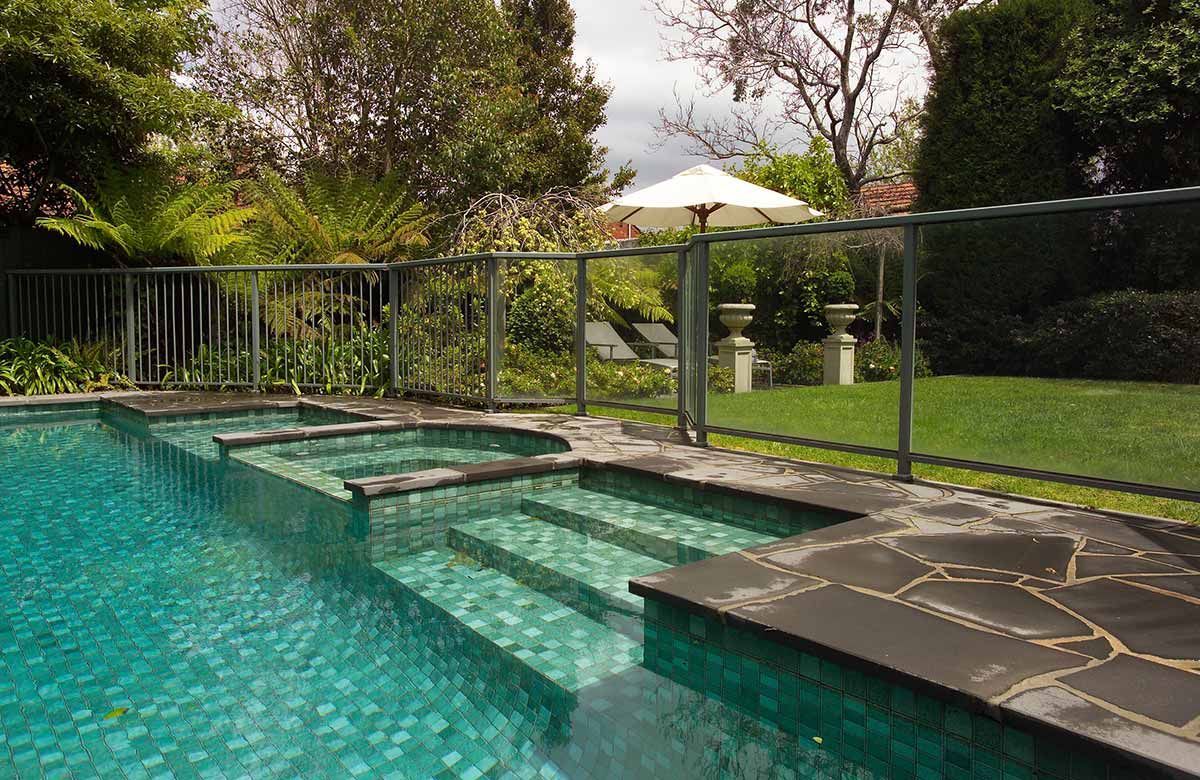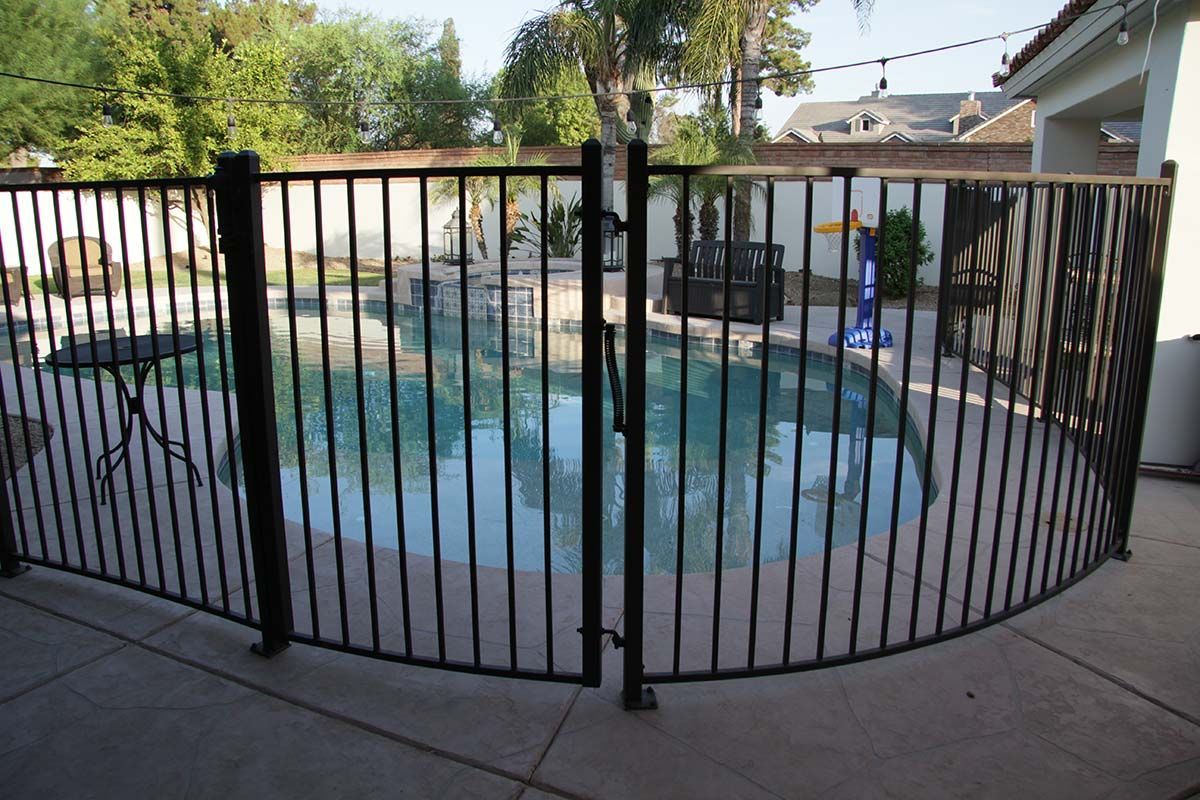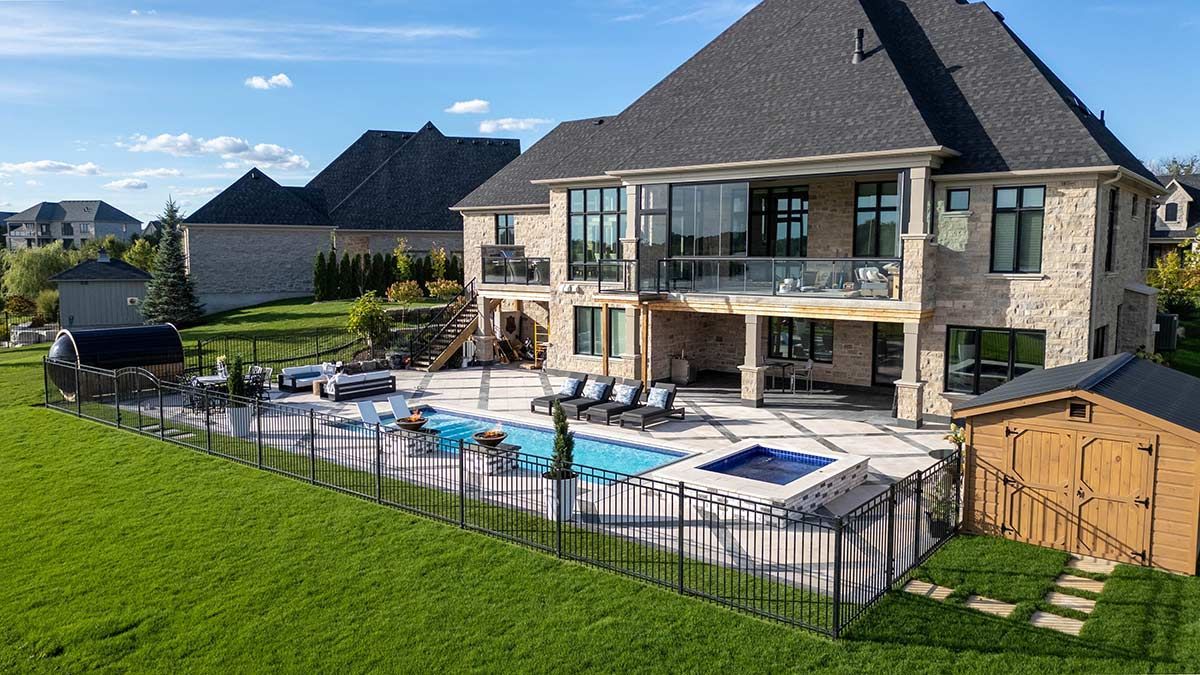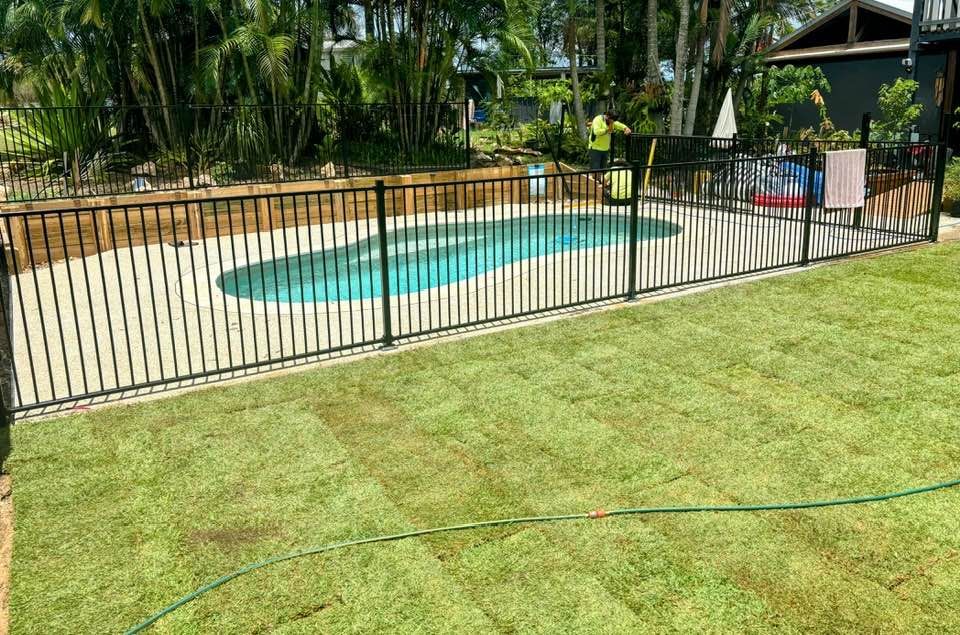Pool Fencing Bundaberg
Secure Your Pool
If you need pool fencing for your pool area, look no further than Brendan's Landscaping & Fencing. If you live in or around Bundaberg, we'd love to help. Our team works hard to build pool fences designed to last, using powder-coated colours to create a durable finish. The pool fence heights we offer are 1200mm, 1500mm and 1800cm.
Our pool fences exceed Australian Swimming Pool Safety Fencing and Gates standards. Beautifully complemented with our paving, we'd love to create a complete look you'll love. To go over options and find the right pool fences for you, call our team on 0432 793 382.
Contact Brendan for a free quote today!
The Importance of Pool Safety
In Australia, it’s a legal requirement to have a safe and secure fence around your pool at home. And with the famously hot summers we know all too well, our pools get a lot of use, making pool fencing a worthwhile investment all around. Thankfully, these days pool fences come in various styles and materials, allowing you to have creative control over the aesthetic and function of your chosen option.
Not only does pool fencing protect your family and friends, but it also adds value to your home. If you sell in the future, having stable fences around your pool area gives prospective buyers peace of mind.
Common Pool Fencing Mistakes to Avoid in Bundaberg
When it comes to pool fencing Bundaberg homeowners, there are several key mistakes that can be costly in terms of safety, compliance and overall aesthetics. While pool fencing is an essential part of creating a secure environment for your pool area, it’s important to approach the installation and maintenance of your fence with care. Avoiding common mistakes can help you ensure that your pool is not only safe but also visually appealing and compliant with local regulations.
1. Not Following Local Regulations
One of the most common mistakes homeowners make when installing pool fencing in Bundaberg is failing to follow local pool safety regulations. In Australia, strict rules govern pool fences, including height, gap size and the requirements for self-closing gates. Bundaberg is no exception and not adhering to these regulations can result in fines or, worse, unsafe conditions for your family and visitors. Be sure to check the latest guidelines before installation, or consult with a professional to guarantee compliance.
2. Choosing the Wrong Material for the Environment
Bundaberg's subtropical climate can be harsh on certain materials, especially those exposed to moisture, humidity and salt air. For example, untreated timber may warp or degrade quickly in Bundaberg's coastal environment. While timber fencing is a popular choice for many, it's important to treat it properly and choose high-quality materials that can withstand the elements. For those looking for low-maintenance and long-lasting options, materials like aluminium, steel or glass can be better suited for the area.
3. Improper Installation or Poor Quality Workmanship
Even if you choose the right materials for your pool fence, improper installation is another mistake that can lead to safety issues or costly repairs down the line. Pool fences need to be installed securely and correctly to prevent easy access by children or pets. If the installation is not done according to the standards—such as incorrect gate alignment or insufficient foundation—the fence may fail to provide the level of protection needed. Always hire experienced professionals who specialise in pool fencing in Bundaberg to ensure proper installation and safety.
4. Ignoring Maintenance Needs
Pool fences require regular maintenance to keep them functioning properly and looking their best. A common mistake is installing the fence and then forgetting to inspect it over time. Whether it’s checking the gate for proper function, looking for rust or decay in metal fences or making sure timber fences are treated and sealed, regular maintenance is essential. Ignoring maintenance can lead to deterioration and even accidents, as worn or damaged fences are less effective at providing the necessary protection.
5. Overlooking Aesthetic Appeal
While pool safety is the top priority, it's also important to ensure that your pool fencing enhances the overall look of your property. A common mistake is selecting a fence that clashes with your landscaping or home’s design. Fortunately, Bundaberg offers various fencing styles and materials, from modern glass pool fences to traditional timber fencing, that can seamlessly blend into your landscape. Taking the time to choose a style that complements your outdoor space will increase the visual appeal and property value.
6. Not Considering Pool Usage
The type of pool fencing you choose should also consider how you use your pool. For example, if your pool area sees frequent use by children, you may want to opt for a fence that offers the highest level of security, such as a solid metal or glass fence. On the other hand, if you have a more decorative pool that is seldom used, you may prioritise aesthetics while still ensuring it meets safety standards.
By avoiding these common pool fencing mistakes, Bundaberg homeowners can create a safe, durable and visually pleasing pool area that enhances their outdoor living space. Proper planning and professional installation are essential to ensuring your pool fencing remains both functional and stylish for years to come.
Pool Fencing Regulations in Bundaberg
Living in Bundaberg means enjoying a warm, subtropical climate for much of the year—perfect for poolside living. However, the same climate that makes backyard pools so popular also presents unique challenges when it comes to maintaining outdoor features like pool fencing. Bundaberg's high humidity, intense UV exposure, salty coastal air and seasonal rain can all impact the longevity and appearance of your fence. Proper upkeep is essential not just for aesthetics but also to maintain safety and compliance with local pool fencing regulations.
Whether your pool fencing in Bundaberg is made from glass, metal, PVC or timber, a tailored maintenance routine will help keep it in top shape throughout the year. Neglecting regular care can lead to corrosion, warping and reduced safety—all of which can become costly to fix.
1. Regular Cleaning Prevents Build-Up
One of the easiest and most important steps in maintaining pool fencing is routine cleaning. Salt in the air, especially in coastal parts of Bundaberg, can build up on your fence and lead to rust or surface damage over time. Similarly, dirt and moisture can cause mould, algae and mildew to form—particularly on timber or PVC fencing. A gentle wash with soapy water and a soft cloth or sponge every month can help preserve your fence’s integrity and appearance.
2. Check for Structural Integrity
Because pool fences are safety barriers first and foremost, they must always remain structurally sound. At least every few months, inspect your fence for any loose panels, damaged posts or malfunctioning gates. Make sure that self-closing mechanisms are working correctly and that no sections have shifted due to soil movement or weather conditions.
3. Repainting or Sealing for Longevity
For timber fencing around pools, periodic sealing or painting is critical. The combination of water, sun and air can cause untreated timber to rot or warp, especially in Bundaberg’s humid conditions. If you're using timber fencing near the pool area, applying a waterproof sealant every one to two years will help prolong its life and preserve its appearance.
4. Prevent Vegetation Overgrowth
Plants and shrubs that grow too close to your pool fence can create moisture traps or even damage fencing materials. Keep surrounding vegetation trimmed to allow for airflow and easy cleaning access. This also helps maintain visibility, which is crucial for pool safety.
5. Don’t Ignore Minor Damage
Small cracks or rust spots might seem harmless but can quickly lead to bigger problems. Address any signs of wear and tear immediately to avoid safety hazards or complete replacements down the track. For example, pool fencing in Bundaberg that’s made from metal can start to rust if not treated early, especially in coastal locations with salt-laden winds.
By following these steps, you can maintain your pool fencing in Bundaberg effectively and avoid unnecessary repairs. Not only does this keep your fence looking great, but it also guarantees that your fencing remains compliant with local safety regulations and is ready to protect your loved ones. Whether you’ve opted for sleek glass, durable aluminium or classic timber, a bit of care goes a long way in keeping your pool area safe and beautiful year-round. With proper maintenance, your investment in pool fencing in Bundaberg will pay off in peace of mind and lasting value.
The Pool Fencing Regulations & Safety Standards in Bundaberg
When it comes to owning a pool in Bundaberg, safety isn't just a personal priority—it's the law. Queensland has some of the strictest pool safety regulations in Australia, and homeowners are legally required to meet specific standards to prevent accidents and injuries. Whether you’re installing a new pool fence or upgrading an existing one, understanding the rules around pool fencing in Bundaberg is essential to avoid costly fines and improve overall safety.
Under Queensland law, all residential swimming pools must be enclosed by a compliant pool fence. According to the Department of Housing and Public Works, the legislation is governed by the Queensland Development Code MP 3.4 and enforced by local councils, including Bundaberg Regional Council. These rules apply to both permanent and temporary pools deeper than 300mm.aragraph

